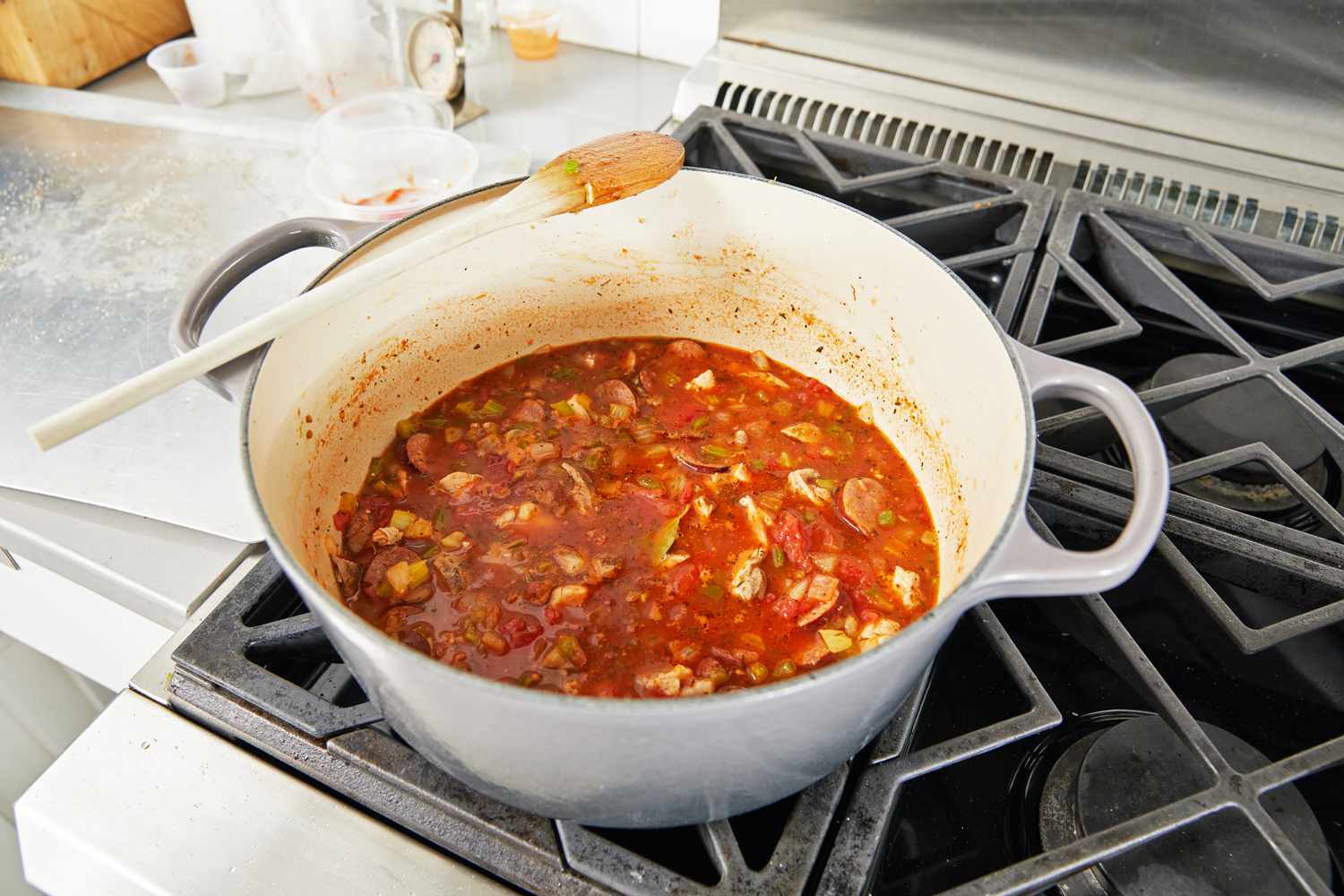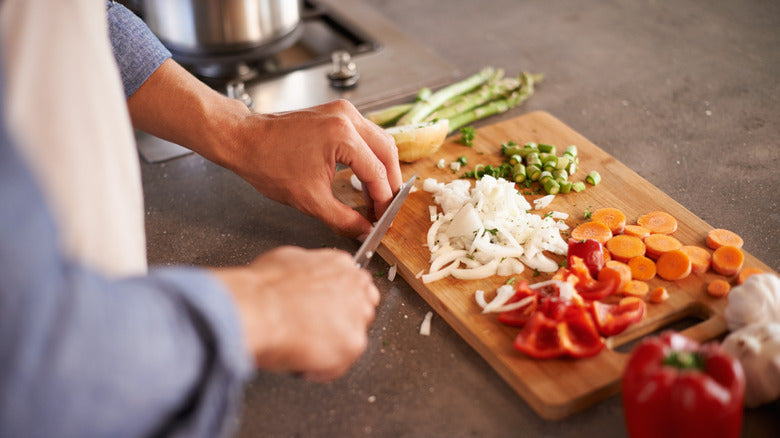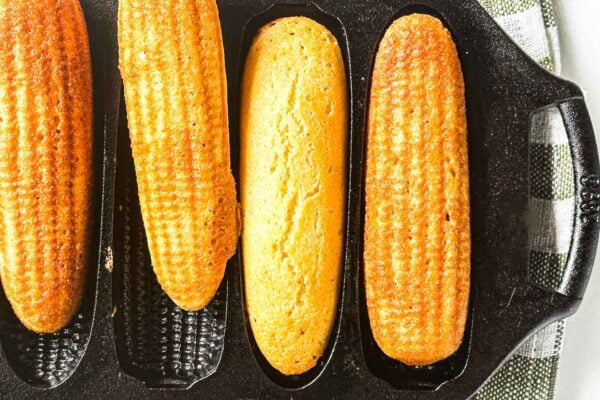For many kitchen professionals, a dutch oven is more than just a piece of cookware; it's an indispensable tool that elevates culinary creations to new heights. However, understanding how to clean dutch oven enamel properly is essential to ensure its longevity and maintain the pristine-colored finish that makes it so sought after. In this article, well delve into the best practices and techniques for cleaning your enamel dutch oven.
Enamel coatings serve many purposes, from enhancing appearance to providing non-stick properties. Yet, they can suffer from stains, food buildup, and scratches. Therefore, knowing how to take care of them is vital for chefs who have invested in high-quality cookware.
:max_bytes(150000):strip_icc()/med102639wkd0_0107_brisedchick_horiz-0124.jpg-00f24780581549f9827c996297ca1b03.jpg)
Understanding Enamel Coating
Embracing the beauty of a dutch oven entails understanding its components. Its interior is coated with a porcelain enamel finish. This design not only provides a smooth cooking surface but is also aesthetically pleasing. However, the characteristics of enamel make it susceptible to various complications.
Before we dive into the cleaning methods, it is crucial to know what to avoid while cleaning to prevent damaging the enamel surface.
Common Mistakes to Avoid
Error #1: Using Metal Utensils - Metal utensils can scratch the enamel and lead to deterioration over time. Opt for wooden or silicone utensils instead.
Error #2: Abrasive Cleaners - Using tough scrubs and harsh chemicals can harm the surface. Stick to softer cleaning agents.
Error #3: High Heat - Exposing the enamel to extreme temperatures can result in cracking. Always use moderate heat settings.
Step-by-Step Guide on How to Clean Dutch Oven Enamel
Now that we know what not to do, lets move on to proper cleaning techniques.
Initial Rinse
Start by rinsing the dutch oven with warm water to loosen any food particles stuck to it. This will allow for easier cleaning and reduce the risk of scratching.
Soak the Cookware
If food residues are stubborn, fill your dutch oven with hot water and a few drops of dish soap. Let it soak for 15-30 minutes. This method softens stuck-on food, making it easier to scrub without damaging the enamel.
Gentle Scrubbing
After soaking, use a soft sponge or dishcloth to scrub the enamel. For tougher stains, you may mix baking soda and water to create a paste and gently apply it to the affected areas. Let it sit for a few minutes before scrubbing.
Rinse Thoroughly
Once youve scrubbed away stains, rinse the dutch oven thoroughly with warm water. Make sure no soap residue remains, as this can impact the flavor of future meals.
Alternative Cleaning Methods
There are numerous alternative methods for cleaning your enamel dutch oven. Below are some formidable options:
Baking Soda Paste
Mix baking soda with enough water to create a paste. Apply this paste to stains and let it sit before scrubbing. Baking soda is a natural abrasive that wont harm your enamel.
Vinegar and Baking Soda
A combination of vinegar and baking soda works wonders for stubborn stains. The effervescence can help lift food residue without damaging the surface.
Deep Cleaning Techniques
For a thorough clean, especially if your dutch oven has been through heavy use, you might want to consider deep cleaning options.
Using Dishwasher Detergent
For very stubborn stains, add one tablespoon of dishwasher detergent to hot water in your dutch oven and let it soak overnight. Rinse thoroughly the next day.
Hydrogen Peroxide for Tough Stains
In extreme cases, apply hydrogen peroxide on the stained areas and let it sit for a few hours. This method is especially effective for those difficult-to-remove cooking stains.
Prevention is Better Than Cure
To ease the cleaning process, its crucial to implement preventative measures. Following proper cooking habits can minimize residue buildup on your enamel cookware.
Seasoning Your Duties
Before using your dutch oven, its best practice to season it lightly, which creates a non-stick layer that reduces food residue.
Regular Maintenance
Make it a habit to clean your dutch oven immediately after use rather than allowing food to harden. The sooner you tackle the mess, the easier it will be.
When to Replace Your Enamel Cookware
Even with the best care, there may come a time when its necessary to replace your dutch oven. Look for visible chips, cracks, or discoloration. Persistent stains can also serve as signs of wear.
Conclusion
Now that youre equipped with the knowledge of how to clean dutch oven enamel, its time to maintain the quality of your cookware. With the right techniques and preventative measures, your dutch oven can last you many years, effortlessly producing delicious meals.
Helpful Resources:
:max_bytes(150000):strip_icc()/GettyImages-1058029026-2000-3e7d0a3579d346108bb901a51501115f.jpg)
FAQs
Can you use steel wool on enamel dutch ovens?
No, using steel wool can scratch and damage the enamel coating.
How do I remove burnt food from my dutch oven?
Soak it in hot soapy water or use a baking soda paste for stubborn stains.
Is it safe to put enamel dutch ovens in the dishwasher?
While some manufacturers may allow it, hand washing is generally recommended to prevent damage.
This article contains affiliate links. We may earn a commission at no extra cost to you.






Leave a comment
This site is protected by hCaptcha and the hCaptcha Privacy Policy and Terms of Service apply.